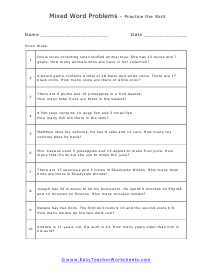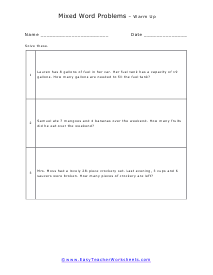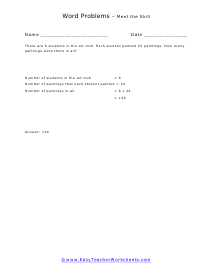When approaching a math word problem there is process, we encourage students to follow. Start by reading everything. Many times, students will just look for the number portion of problem and negate the actual question. Get in the habit of calmly giving it a read through. I would then identify what the question is asking me for and what the possible solution would look like. I would do this by circling and numbers that you might use and cross out any information that does not relate to the solution. Many times, word problems will have filler information that does not relate to what the solution is. I would then start to draw a model of what is going on and label everything that I could. From there I begin to formulate my answer and make sure the final answer is in the proper units of measure.
Your students will write and solve equations to answer both simple and more complex word problems. This set of worksheets includes word problems that require all four basic mathematical operations (addition, subtraction, multiplication, and division). Problems are at both the basic and intermediate levels, and subject matter includes both money problems and real-world situations (making change, dividing into groups, figuring with fractions, etc.). This set of worksheets contains introductory lessons, step-by-step solutions to sample problems, and a variety of different practice problems, including worksheets with only a few problems that can be used as classroom warm-ups. Some worksheets contain problems that each require different mathematical operations (mixed word problems), so that students develop proficiency across a range of problem types in a single setting. When finished with this set of worksheets, students will be able to solve word problems at the basic and intermediate levels. These worksheets explain how to write and solve equations to answer both basic and intermediate-level word problems. Sample problems are solved and practice problems are provided.
























